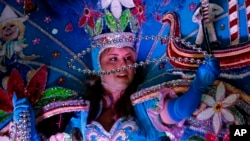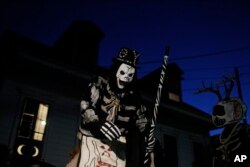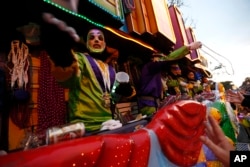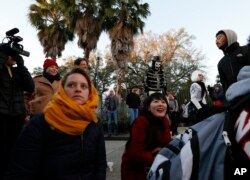Thousands of people gathered in New Orleans, Louisiana, Tuesday to partake in the annual celebration of Mardi Gras and watch as world-renowned parades marked the end of the Carnival season.
Each year, people from across the U.S. and the world gather to witness the festivities of Mardi Gras, or Fat Tuesday. Its name refers to the day before Ash Wednesday, the first day of Lent.
Many tourists arrived in the city of New Orleans at the start of the past weekend for Carnival festivities that led up to the big parades Tuesday. Fat Tuesday also is a day full of parties, rich food and drink.
Of all the parades that happen throughout the city, the most famous include Bacchus, Endymion, Zulu and Rex.
The Zulu parade is put on by a historically black organization in New Orleans called the Zulu Social Aid & Pleasure Club, and it dates to around 1910.
The Rex parade dates to 1872.
During the parades, visitors stroll through the streets waiting to catch a “throw” of trinkets. Riders on the floats typically dress in costume and throw beads and other items to people along the route. These trinkets also may include stuffed animals, hats, and other decorated items.
Origins in U.S.
Celebrated in France since the Middle Ages, the origins of Mardi Gras in America date back to the 1600s, when a French explorer by the name of Sieur d’Iberville sailed into the Gulf of Mexico and launched an expedition along the Mississippi River.
The explorer set up camp along the river on March 3, 1699, the same day on which Mardi Gras was being celebrated in France. He named the site Point du Mardi Gras in honor of the festival.
The parades that are now characteristic of the New Orleans celebration have become etched into the city’s culture and are similar to those put on in other countries.
Brazil, Portugal
In Rio de Janeiro, Brazil, hundreds of thousands of tourists and residents come together for one of the world’s most famous celebrations. People anticipate the parades and the street parties that can be found in a number of neighborhoods.
Festivities of Fat Tuesday, for this reason, have moved away from the religious origins of the festival into a mostly secular celebration.
Many residents and visitors also gather in Portugal each year to celebrate the Carnival season.
During a period of debt, budget cuts and job losses, residents did not abandon the tradition of Mardi Gras. Thousands of Portuguese turn out in costumes and cheer the parades and samba dancing.










